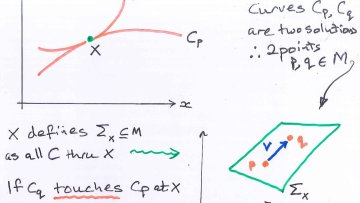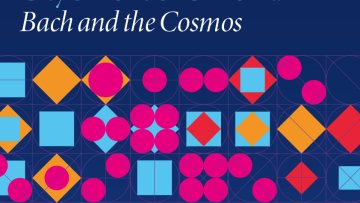Oxford Mathematician Professor Nick Trefethen, Professor of Numerical Analysis and Head of Oxford's Numerical Analysis Group has been awarded honorary degrees by the University of Fribourg in Switzerland and Stellenbosch University in South Africa where Nick was cited for his work in helping to cultivate a new gen
16:00
Microlocal Sheaves on Pinwheels
Abstract
It is shown by Kashiwara and Schapira (1980s) that for every constructible sheaf on a smooth manifold, one can construct a closed conic Lagrangian subset of its cotangent bundle, called the microsupport of the sheaf. This eventually led to the equivalence of the category of constructible sheaves on a manifold and the Fukaya category of its cotangent bundle by the work of Nadler and Zaslow (2006), and Ganatra, Pardon, and Shende (2018) for partially wrapped Fukaya categories. One can try to generalise this and conjecture that Fukaya category of a Weinstein manifold can be given by constructible (microlocal) sheaves associated to its skeleton. In this talk, I will explain these concepts and confirm the conjecture for a family of Weinstein manifolds which are certain quotients of A_n-Milnor fibres. I will outline the computation of their wrapped Fukaya categories and microlocal sheaves on their skeleta, called pinwheels.
If you type fundamental anagram of calculus into Google you will be led eventually to the string of symbols 6accdæ13eff7i3l9n4o4qrr4s8t12ux, probably accompanied by an explanation more or less as follows: this is a recipe for an anagram - take six copies of a, two of c, one of d, one of æ and so on, then rearrange these letters into a chunk of Latin.
According to John Eliot Gardiner in his biography of Johann Sebastian Bach, nothing in Bach's rigid Lutheran schooling explains the scientific precision of his work. However, that precision has attracted scientists and mathematicians in particular to the composer's work, not least as its search for structure and beauty seems to chime with their own approach to their subject.
11:00
Linear and Cyclic Antimetrics
Abstract
The core idea behind metric spaces is the triangular inequality. Metrics have been generalized in many ways, but the most tempting way to alter them would be to "flip" the triangular inequality, obtaining an "anti-metric". This, however, only allows for trivial spaces where the distance between any two points is 0. However, if we intertwine the concept of antimetrics with the structures of partial linear--and cyclic--orders, we can define a structure where the anti-triangular inequality holds conditionally. We define this structure, give examples, and show an interesting result involving metrics and antimetrics.
Fusion energy may hold the key to a sustainable future of electricity production. However some technical stumbling blocks remain to be overcome. One central challenge of the fusion enterprise is how to effectively withstand the high heat load emanating from the core plasma. Even the sturdiest solid solutions suffer damage over time, which could be avoided by adding a thin liquid coating.
FORTEC - Using Networks and Agent-Based Modelling to Forecast the Development of Artificial Intelligence Over Time
Abstract
There have been two main attempts so far to forecast the level of development of artificial intelligence (or ‘computerisation’) over time, Frey and Osborne (2013, 2017) and Manyika et al (2017). Unfortunately, their methodology seems to be flawed. Their results depend upon expert predictions of which occupations will be automatable in 2050, but these predictions are notoriously unreliable. Therefore, we develop an alternative which does not depend upon these expert predictions. We build a dataset of all the start-ups, firms, and university research laboratories working on automating different types of tasks, and use this to build a dynamic network model of them and how they interact. How automatable each type of task is ‘emerges’ from the model. We validate it, predicting the level of development of supervised learning in 2017 using data from the year 2000, and use it to forecast of the automatability of each of these task types from 2018 to 2050. Finally, we discuss extensions for our model; how it could be used to test the impact of public policy decisions or forecast developments in other high-technology industries.
Riding through glue: the aerodynamics of performance cycling
Abstract
As a rule of thumb, the dominant resistive force on a cyclist riding along a flat road at a speed above 10mph is aerodynamic drag; at higher speeds, this drag becomes even more influential because of its non-linear dependence on speed. Reducing drag, therefore, is of critical importance in bicycle racing, where winning margins are frequently less than a tyre's width (over a 200+km race!). I shall discuss a mathematical model of aerodynamic drag in cycling, present mathematical reasoning behind some of the decisions made by racing cyclists when attempting to minimise it, and touch upon some of the many methods of aerodynamic drag assessment.







